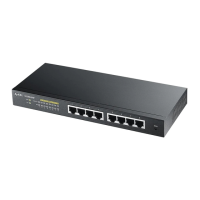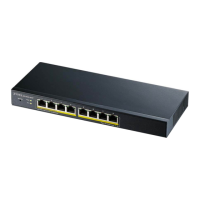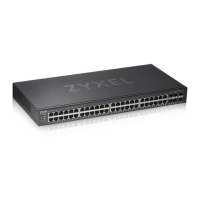Chapter 14 Monitor: Spanning Tree
GS1900 Series User’s Guide
98
14.2.5 STP Sta tistic s
(R)STP detects and breaks network loops and provides backup links between switches, bridges or
routers. It allows a Switch to interact with other (R)STP-compliant switches in your network to ensure that
only one path exists between any two stations on the network.
The Switch uses IEEE 802.1w RSTP (Rapid Spanning Tree Protocol) that allows faster convergence of the
spanning tree than STP (while also being backwards compatible with STP-only aware bridges). In RSTP,
topology change information is directly propagated throughout the network from the device that
generates the topology change. In STP, a longer delay is required as the device that causes a topology
change first notifies the root bridge and then the root bridge notifies the network. Both RSTP and STP flush
unwanted learned addresses from the filtering database. In RSTP, the port states are Discarding,
Learning, and Forwarding.
Note: In this user’s guide, “STP” refers to both STP and RSTP.
Use this screen to view the Switch’s spanning tree STP statistics. Click Mo nitor > Spa nning Tre e > STP
Sta tistic s to access this screen.
Fig ure 100 Monitor > Spanning Tree > STP Statistics
Designated Bridge For each LAN segment, a designated bridge is selected. This bridge has the lowest cost to
the root among the bridges connected to the LAN.
Port Role This field displays the state of the port role.
Port State This field displays the state of the port.
Table 47 Monitor > Spanning Tree > MST Port (continued)
LABEL DESCRIPTIO N

